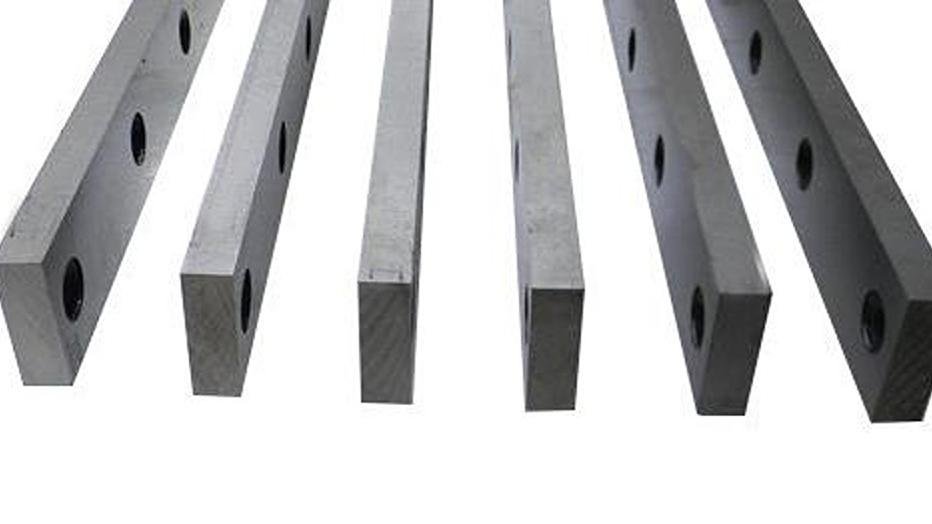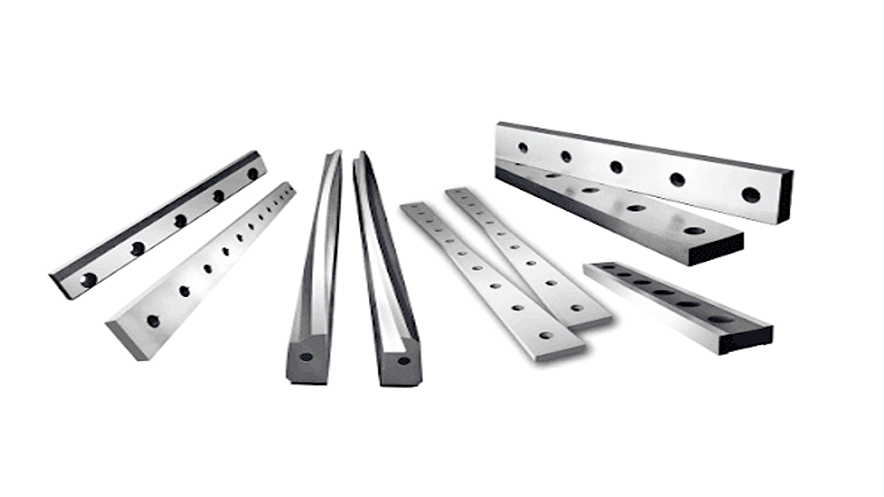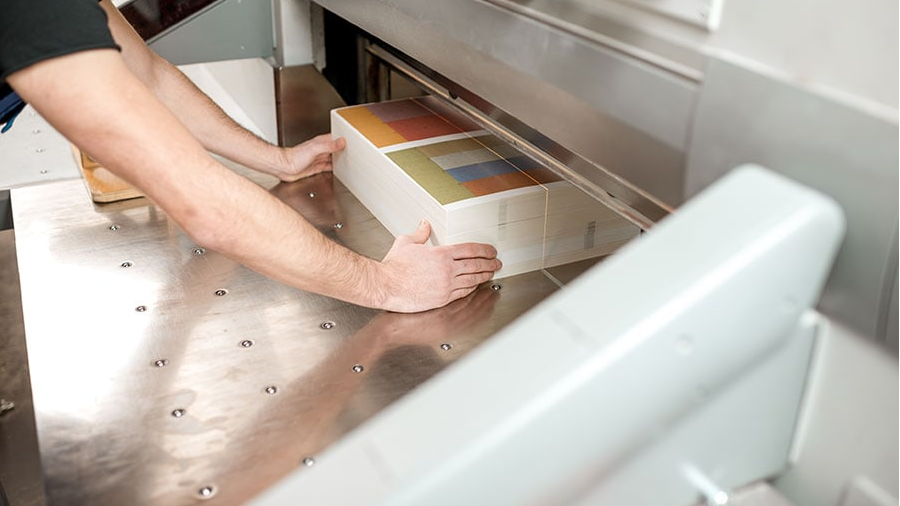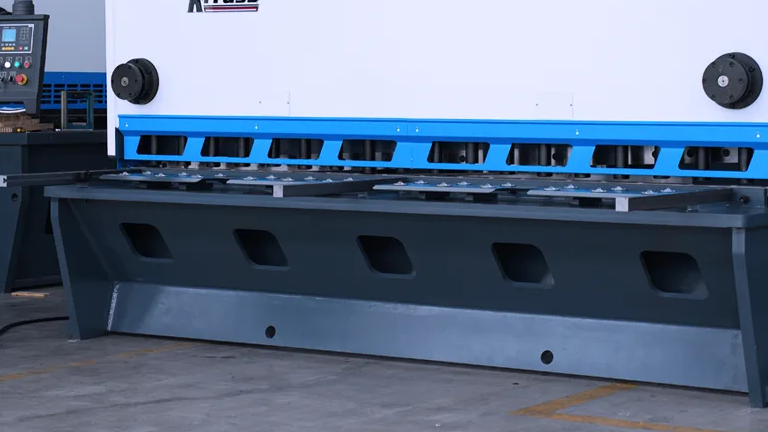Tired of dull guillotine shear blades causing rough cuts and constant downtime? These issues disrupt your workflow and eat into profits. The answer is focusing on superior blade wear resistance1.
Wear resistance is crucial because it directly impacts a guillotine shear blade2's lifespan, cutting precision, and overall operational cost. A highly wear-resistant blade stays sharper for longer. This reduces downtime for maintenance and ensures consistent, high-quality cuts, boosting both productivity and profitability.
You now know wear resistance is the core of a great blade. But what does this really mean for your daily operations? It's the difference between a struggling operation and a highly efficient one. Let’s explore the specific benefits and see how they can directly impact your efficiency and costs. Keep reading to discover how the right blade saves you much more than just time.
How Can Wear-Resistant Blades Extend Lifespan And Slash Downtime?
Frustrated by constant blade changes and maintenance stops? This endless cycle wastes valuable production time and labor. The solution is switching to blades designed for maximum operational uptime.
Wear-resistant guillotine shear blades, often made from materials like high-speed steel or with tungsten carbide inlays3, withstand abrasion far better. This means they last much longer before needing replacement or regrinding. The direct result is significantly less downtime, leading to more continuous and efficient production runs.
When we talk about extending blade life, the material is everything. It is not just about being hard. It is about toughness and the ability to hold a sharp edge under constant friction and impact. A blade that quickly becomes dull is a constant source of inefficiency. In my role at PASSION, I help customers analyze this exact problem to find a lasting solution.
Choosing The Right Material For Durability
At PASSION, our goal is to match the blade material to the job. This ensures the longest possible service life.
- High-Speed Steel (HSS) and Tool Steels: These are excellent choices for many applications. They are engineered to maintain their hardness and sharp edge even at the high temperatures generated during continuous, high-speed cutting.
- Tungsten Carbide Inlays: For the most demanding jobs, like cutting abrasive materials, we often recommend blades with tungsten carbide inserts. Tungsten carbide is exceptionally hard and dense. It offers a wear life that can be many times longer than even the best tool steels.
This focus on material science directly translates to more uptime and a more predictable maintenance schedule for your operations.
| Material | Key Feature | Best For |
|---|---|---|
| Standard Tool Steel | Good balance of toughness & wear | General-purpose cutting |
| High-Speed Steel (HSS) | Maintains hardness at high temps | High-speed, continuous operations |
| Tungsten Carbide Inlay | Exceptional hardness & longevity | Abrasive or high-volume materials |
Does Better Wear Resistance Lead To Cleaner, More Precise Cuts?
Are burrs, frayed edges, and inaccurate cuts hurting your product quality? This material waste and potential for rejects directly impacts your bottom line. A wear-resistant blade is the answer.
Yes, absolutely. High wear resistance allows a blade’s cutting edge to remain sharp and free of micro-fractures for a much longer period. A sharp edge cuts cleanly through material instead of tearing or deforming it. This consistency is vital for maintaining product quality and operational efficiency.
A sharp blade is a precise blade. But a blade is only as good as its ability to stay sharp. This is where wear resistance becomes the most important factor for quality control in any cutting operation. A blade that dulls even slightly can compromise the quality of every single product that follows.
The Science Of A Clean Cut
Think about cutting kitchen vegetables with a sharp knife versus a dull one. A sharp edge cleanly severs the material's fibers with minimal force. A dull edge, however, has a rounded profile. It has to push, tear, and deform the material to get through it. In industrial cutting, this results in common defects like burrs, rough edges, and delamination. A blade with high wear resistance maintains that perfect, sharp profile for thousands of cuts, ensuring each one is as clean and precise as the first. This consistency is something our customers value deeply.
My Experience With A Valued Customer
I remember cooperating with Rick, a production supervisor at a corrugated board plant. He was struggling with rough cuts on his slitter scorer machine4 and had to regrind his blades constantly. His old blades were wearing out too quickly. The dulling edge was crushing the delicate corrugated flutes instead of slicing them. We analyzed his situation and recommended a high-wear-resistance slitter blade from our PASSION line. The improvement was immediate. His cuts were clean, the board stayed flat, and product rejects dropped to almost zero. It proved that the right blade does not just cut—it protects the integrity and value of your final product.
Are High Wear-Resistance Blades Truly More Cost-Effective In The Long Run?
Hesitating over the higher initial cost of premium blades? This short-term thinking often leads to greater long-term expenses from replacements, maintenance, and waste. Think of it as an investment.
Yes, they are significantly more cost-effective. While the initial purchase price may be higher, the total cost of ownership is much lower. This is because they last longer, require fewer replacements and less maintenance, and reduce material waste caused by poor cuts. They are a smart investment.
It is natural to look at the price tag first. However, a smart manager looks at the Total Cost of Ownership (TCO). In my experience, a high-performance, wear-resistant blade always pays for itself. The upfront cost is only one small part of the bigger financial picture. The real savings come from increased efficiency and reduced expenses over the blade's entire life.
Breaking Down The True Costs
Let's look beyond the initial purchase. Your total cost includes many factors that a cheap blade will increase.
- Replacement Frequency: The most obvious saving. A blade that lasts three times longer means you buy one-third as many blades. The math is simple and the savings are direct.
- Labor Costs: Every time you stop production to change or regrind a blade, you are paying an employee for maintenance time instead of production time. These hours add up quickly.
- Material Waste: Poor cuts caused by dulling blades lead to scrapped material. This is a direct loss of raw materials and profit that you can avoid.
- Machine Stress: This is a huge hidden cost. A dull blade requires much more force to make a cut. This extra force puts a huge strain on your machine’s guides, bearings, and hydraulic systems. This leads to premature wear and expensive repairs down the line. A sharp, wear-resistant blade cuts easily, protecting your entire machine and saving you from costly breakdowns.
By investing in a blade that stays sharp, you are not just buying a tool. You are investing in higher efficiency, less waste, and better long-term machine health.
Conclusion
In conclusion, wear resistance is not just a feature; it’s fundamental to blade performance. It boosts lifespan, ensures quality, and lowers total costs, making it a crucial investment.
Understanding blade wear resistance can help you choose the right tools for efficiency and cost savings. ↩
Explore the advantages of guillotine shear blades for precision cutting in various applications. ↩
Find out how tungsten carbide inlays enhance blade performance and longevity. ↩
Explore this resource to understand how slitter scorer machines enhance cutting precision and operational efficiency. ↩







